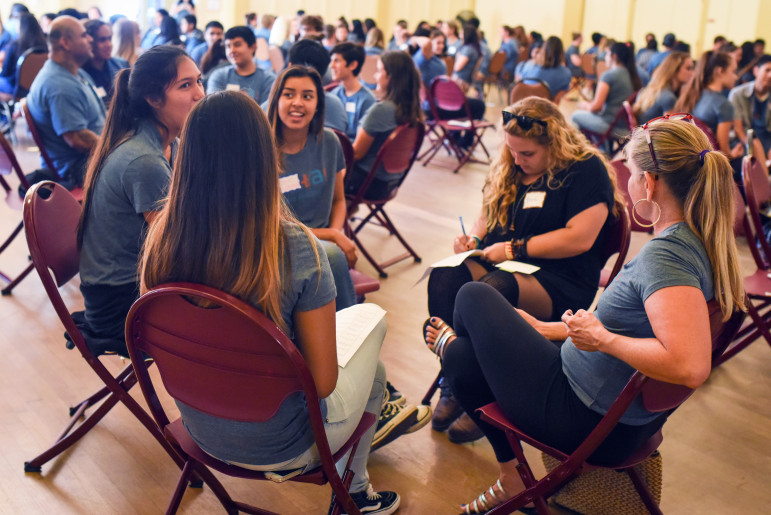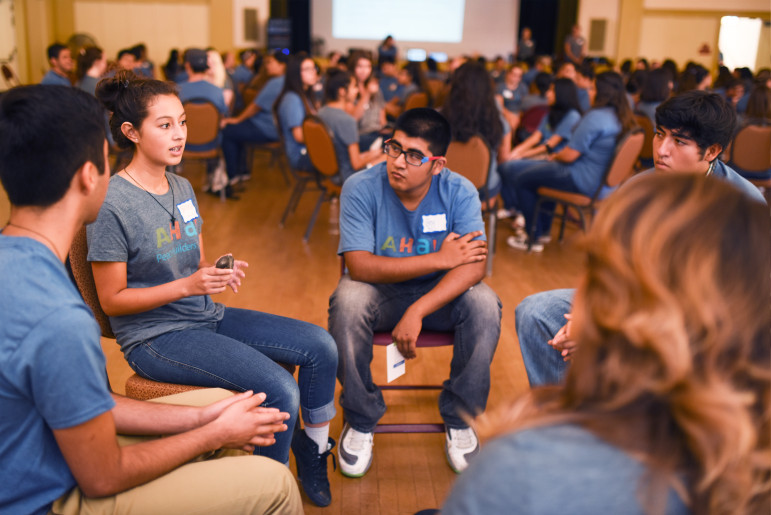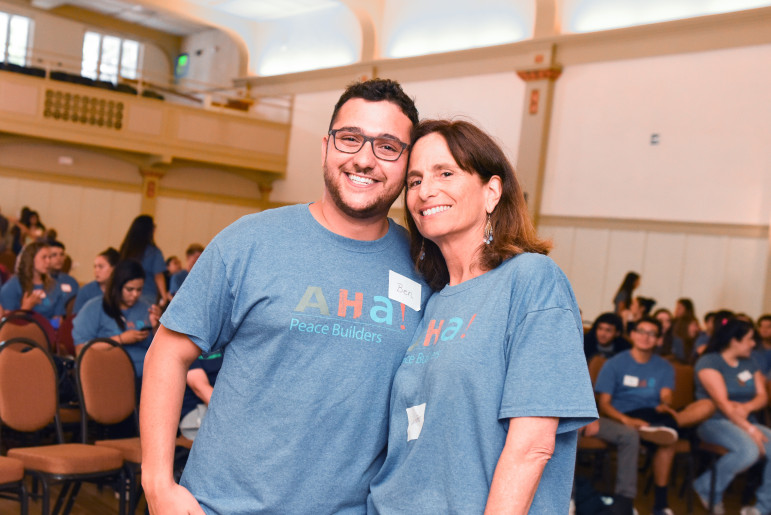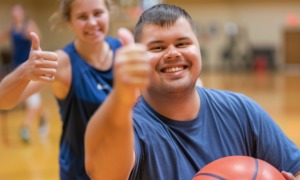When the school superintendent made a pledge to train all the staff and faculty in new ways of discipline and thinking using restorative approaches, I knew this new policy would only be effective if students were enrolled and trained in creating campuses of welcoming, belonging and the repairing of ruptures and harm.
So, last year, we started a program called Peace Builders for teens and created a web application called PEACEQ. (PEACEQ is the capacity to have peace within, peace with others and facilitate peace in your community).
The web application documented that in one school year 100 Peace Builder teens reached 4,000 others through their connection circles. They have lowered suspensions and disciplinary referrals at their schools by an average of 40 percent, as reported by the school’s disciplinary data and records.
We recruited teens from two local high schools who were reflective of the demographics of their campuses and had an active interest in creating a peaceful and inclusive campus culture. We reached these teens through assemblies for interested students and then culled 100 participating teens based on their passion for the project and their follow-through with submitting an application and a detailed contract that specifies their roles, responsibilities and conduct as peace builders.
Once we recruited the teens, we put them through a 12-hour training program, facilitated by 16 highly trained AHA! staff, with the original curriculum where they learned:
- How to deeply listen and share authentically from their hearts
- How to use inclusive and respectful language
- How to interrupt bullying behavior with curiosity and humor
- How to facilitate connection circles for other youth
- How to acknowledge and praise outstanding behavior of other youth and adults
- How to actively do things to help others feel more welcome and cared for
- How to use the PEACEQ web application to track their pro social behavior weekly.
Students were given a $50 stipend or community service hours for completing the training.
“This is the best training ever. I wish we had it every week,” reflected Natasha.
“This program made me so happy at school and I completely see a difference on our campus because of it. People are way more accepting.” said Isaac.
[Related: Shepherding Un(der) Documented Students to a Thriving Life After High School]
“I never used to feel welcome at school. Now I do, and I help others feel that way too,” noted Tyler.
The 100 teens then meet bimonthly in school clubs throughout the school year with our AHA! trained professional facilitators to increase and affirm their skills and keep the momentum going. The schools were highly involved with monthly meetings with our coordinators and supported the program with school space and administrative collaboration along the way.
Teens in the clubs used the PEACEQ web app, which tracked:
- Peace points — how many actions youth took to create a peaceful campus
- Praise for others — naming someone who has outstanding behavior and noting what they have done and
- Connection Circles — submitting where they have conducted a connection circle, the people in the circle and what questions they asked those people.
Our 100 Peace Builder teens’ reach of 4,000 of their peers and some adults through connection circles taught me that “each one teach one”’ is not just a saying, it is a way of transforming community.
An externally validated research tool from University of California, Santa Barbara, showed the 100 teens who took the Peace Builder training had significant statistical improvement in the areas of increased joy, positive attitude, ability to interrupt bullying behavior and a sense of belonging.
“AHA’s Peace Builders did not just hit a home run this year, they hit a grand slam,” said Santa Barbara Superintendent of Schools Dave Cash.
Our organization has been working with social and emotional learning and facilitating teen brilliance and resilience for 16 years. Because we have a unique ratio of one adult to every six youth in our programs, we are on the front lines of seeing and addressing trauma. Our job is to make sure those teens get the help they need. We have a staff of 20 and serve 2,500 youth directly in summer and after-school programming, and an additional 4,000 indirectly through the Peace Builders work with others. Our annual budget has just reached $1 million.
Dr. Jennifer Freed, Ph.D., MFT, co-founded Aha! in 1999 with Rendy Freedman, serving teens and families in Santa Barbara, Carpinteria and Goleta, Calif. Dr. Freed will be releasing a book next year entitled “PEACEQ.”
To share your experience in the field, please click on youthtoday.org/from-the-field/.
More articles from the field:
Youth Document Their Communities Through Photo Essays
Incorporating More Youth Voice into Our Work
Youth-led HIV & AIDS Awareness Day






























